
THIS WEBSITE CONTAINS IMAGES OF TOBACCO. PLEASE LEAVE NOW IF YOU ARE UNDER THE AGE OF 18 YEARS OLD. PLEASE NOTE WE DO NOT SHIP TOBACCO PRODUCTS TO THE USA OR THE EUROPEAN UNION.
Confirm Age & Enter SiteDeciding to start your own whisky collection can be a nerve-wracking decision when you are expecting to have to spend your life’s savings and every waking hour checking out auctions to be able to get a few decent bottles. Luckily, this isn’t the case, and whisky collecting can be a fairly easy and enjoyable hobby if you get it right! Unfortunately, there are a fair few myths around about collecting whisky that may put some whisky lovers off. Today we address these misconceptions, and give you the truth about collecting whisky!
Whisky lovers will have seen in the news tales of the same bottle of whisky returning to auction every so often, and each time being sold for an increasingly astronomical price. This occurred with the Macallan Valerio Adami 1962, which sold for $600,000 in April 2018, then a record-breaking £814,000 in May 2018, before finally breaking its own record by selling for £848,750 in October 2018! While news like this can certainly make it seem like whisky bottles are only going to skyrocket in price, this is not always the case. While many new release bottles tend to have higher prices, after a few rounds at auction they typically see a decrease in price as demand subsides, allowing you to snap up a bargain!
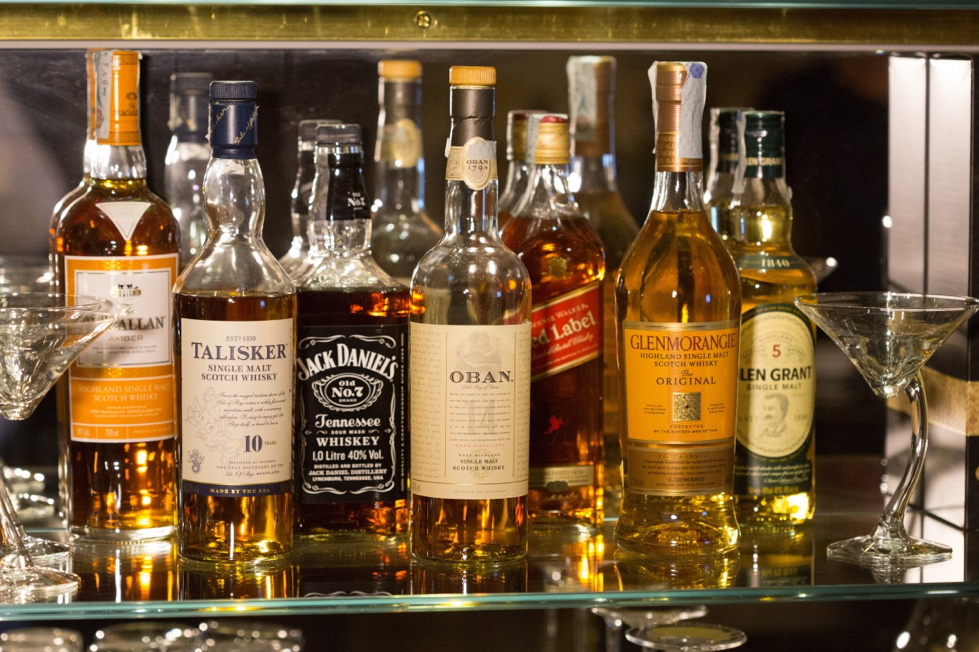
A belief often held in the world of alcohol auctions is that older is better, and therefore you should focus your funds on purchasing older bottles. However, unlike wine, whisky does not get better with age, so there will be little difference taste-wise between a new bottle and a 20-year-old bottle! While the appeal of the collectability of really old whiskies is certainly there, the desire to collect older bottles is more down to their rarity than the whisky within. Modern whiskies are, for the most part, more consistent and better produced than older whiskies, as many distilleries aim to meet high standards, opting for the highest quality woods for casks and dedicating more time to perfecting the flavours present in each bottle.
Some whisky becomes profitable at auction, not because it is an incredibly expensive bottle, but because it is rare or unique. Look out for limited edition releases or something with a unique quirk, such as a themed bottle or a bottle with an intriguing design!
There is also a big difference between collecting and investing in whisky. If you are buying with the sole aim to resell, then you may want to consider the price and potential resale value of each bottle. However, if you want to start a whisky collection for the joy of growing your own collection, then you can take it any direction you wish, without the need for worrying about selecting expensive bottles. For example, instead of focussing your attention on sought-after bottles that will come with a hefty price tag, you could choose to craft a collection of whisky from a specific distillery, region or blend. If you do eventually decide to sell, then a niche collection of themed bottles can do well at auction too!
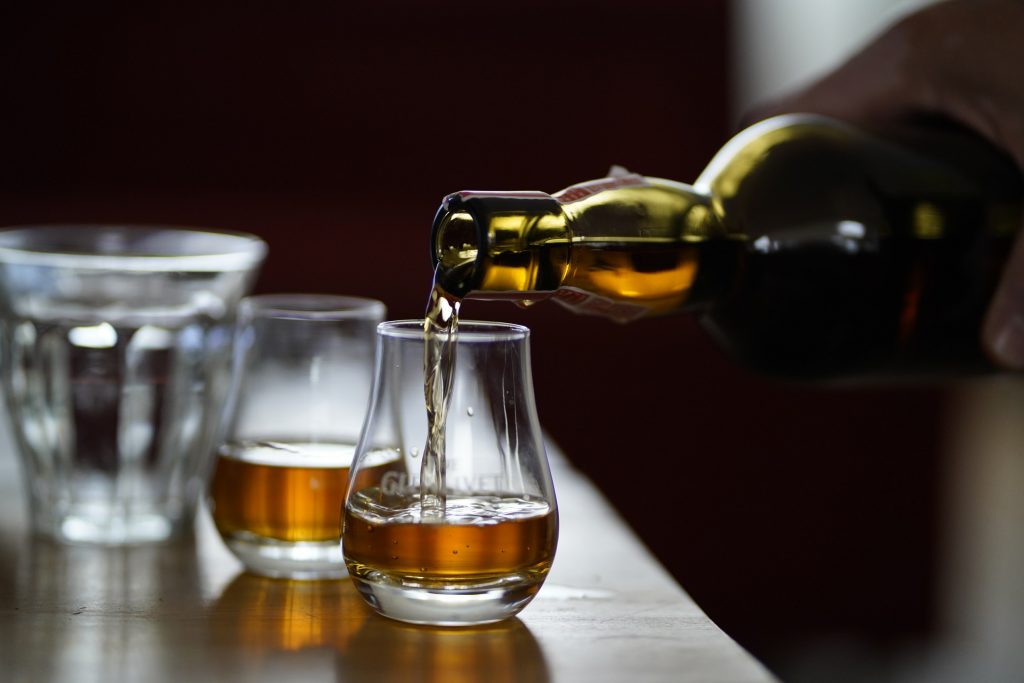
While yes, whisky is made to be drunk, having to wait to sample a special bottle can also be part of the fun! With hundreds of bottles from the 19th-century and early 20th-century having been sold at auction in more recent years just goes to show that whisky has had a long history of being stashed away as a collectable!
When starting out with whisky collecting, you will probably know of a few bottles that have almost cult status in the auction world, and it may seem like that is what you should be aiming for. With bottles going for £800,000 this is obviously unattainable for most, but there is no reason to jump straight in with buying pricey bottles. Start off smaller, and as you gain profits from reselling, you can reinvest this money into increasingly pricey bottles until you can afford what you want! There are commonly bottles for under £100 at auction, which will be a great starting point; just remember to read all the details on tax and shipping, so you’re not hit with unexpected costs!
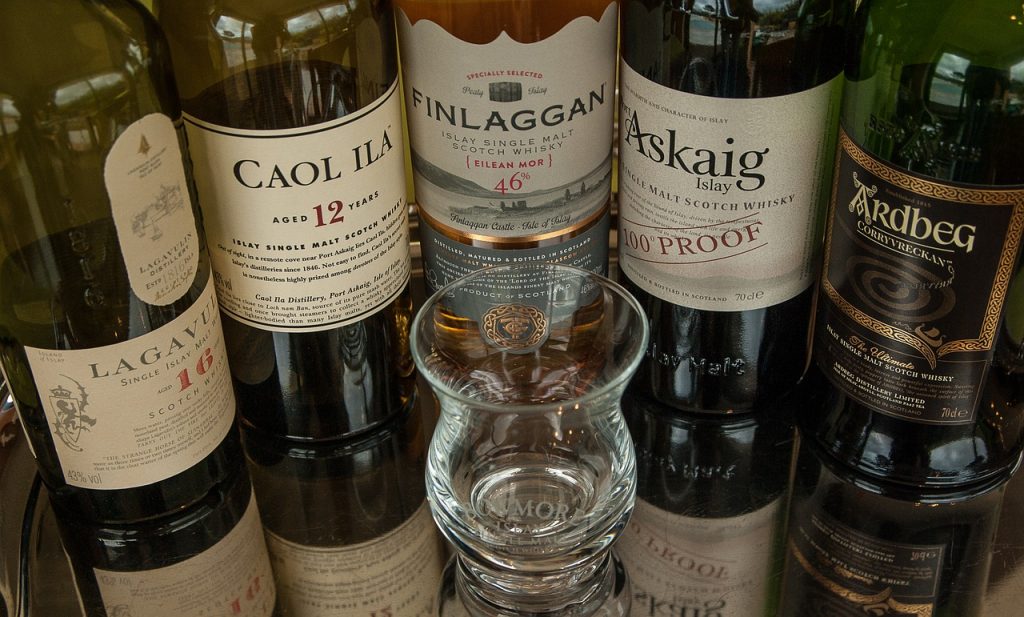
While it is undeniable that auctions have had a hand in the pricing of new releases, with distilleries looking to avoid the immediate resale of their bottles at auction for a higher price, the primary reason that whisky prices have spiked is simply down to the recent increase in popularity. Over the past 10-20 years, whisky has seen a sharp increase in demand, and with distilleries needing to age their drink in casks for anywhere between 3 and 50 years, for some there simply isn’t the supply to meet the demand, leading to price increases.
With record-breaking auction prices being achieved by whisky sales seemingly every other month, you’d be forgiven for believing its too late to get into the whisky collecting game. In comparison to ten years ago, more whisky bottles are being auctioned off in a single night than would be sold over the course of an entire year! However, this does also mean that far more bottles are now passing through auctions, allowing you the chance to get your hands on a bottle that has, until now, just been sitting on someone’s shelf! With the rise in popularity for whisky, we are also seeing many new distilleries opening their doors, creating new and unique products to be collected.
If you want to get your whisky collection started, why not check out the range of Scotch and Japanese whisky for sale here at Havana House!
The ebb and flow in popularity of Irish Whiskey is a story in of itself. Once the producers of the most popular spirit in the world, Irish distilleries saw a sharp and dramatic decline throughout the 19th-century which coincided with Scotland opening new whiskey producers and expanding their industry. From 1890 to 1990, 27 of the 30 distilleries in Ireland closed their doors due to the damaged industry that Irish whiskey had become, however, the past 30 years have seen a great increase once again in Irish Whiskey, with current distilleries in Ireland being expanded and new ones being opened.
This recent rise in popularity has also created a demand for new places to consume this golden liquid, prompting the opening of many new whiskey bars and the renovation of many less frequented establishments. In this article, we look at some of the best places in the beautiful city of Dublin that you can drink both Irish Whiskey, and spirits from across the world.
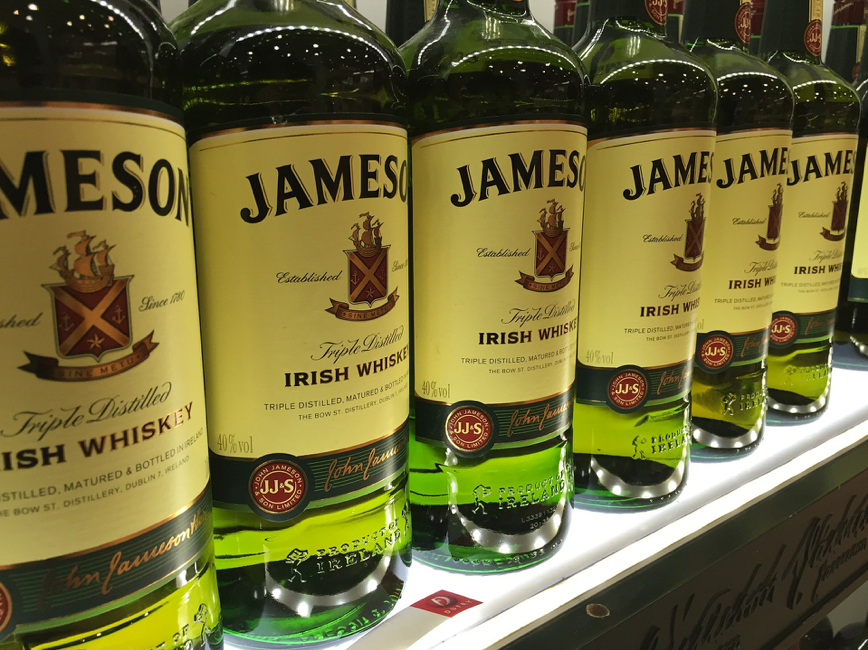
If the fantastic food and monstrous range of craft beers weren’t enough to get you through the door of 57 The Headline, then surely the extensive range of whiskeys will do the trick! The bar stocks a fantastic range of predominantly Irish whiskeys, with some beautifully aged bottles of Jameson, Red Breast, Bushmills and more!
In addition to this already fantastic offering, they serve a range of tasting trays for those looking to explore new flavours. Each tray comes with three different whiskeys so you’ll have the chance to try something new alongside one of your old favourites.
Owned and run by The Porterhouse Group, The Dingle Whiskey Bar is located at the heart of the city in an ideal location. The bar takes its name from the Porterhouse Group-owned distillery of the same name in Co. Kerry and is run with the sole intention of providing great tasting whiskeys to the people of Dublin.
They stock a range of both Irish and Scottish spirits for you to try and are also working on their own distillery which will be stocked on the shelves of the bar when ready. The Dingle also offer a whiskey tasting package which offers you the chance of tasting some fine whiskeys, either from around the world or from a little closer to home in Ireland. These are accompanied by a host that will guide you through the tastes and the histories of the whiskeys.
Stepping into Bowes Lounge is like stepping back in time in the best possible way. It’ll transport you to a by-gone era and treat you with a brilliantly extensive collection of whiskey. They also offer a good range of other beverages and serve food throughout the day. The establishment was opened in 1880 making it one of the city’s oldest bars. Great atmosphere, great whiskey selection, what more is needed?
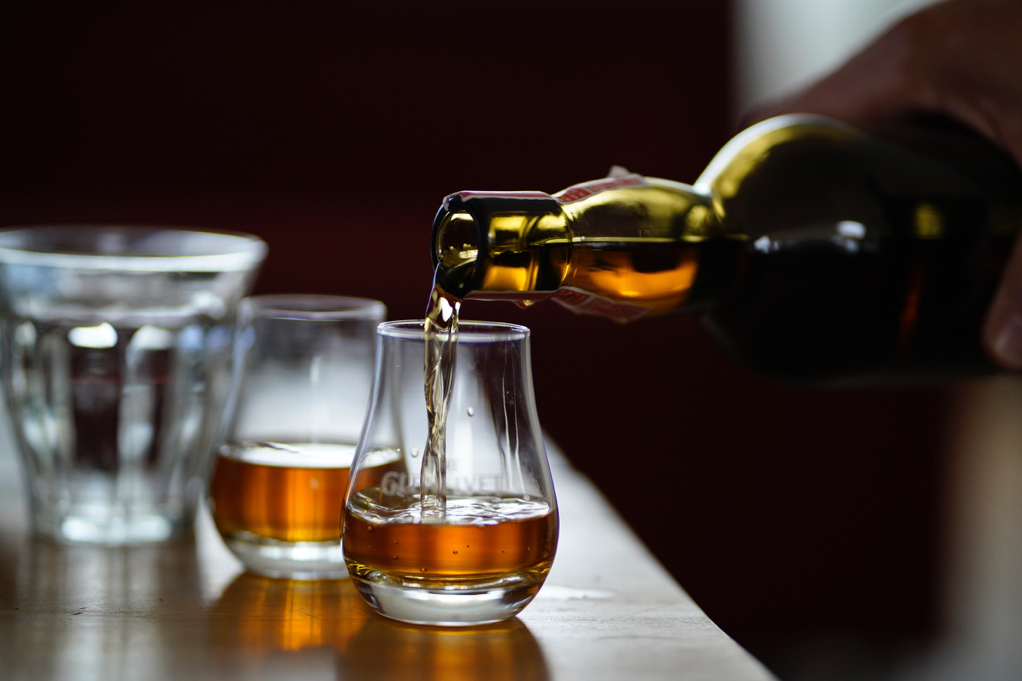
Against the Grain is a nicely decked out classic pub with great beers and a top-notch range of whiskey. The walls are covered in brilliant framed artworks and have been painted with some real pub style. They serve food from lunch until the late evening which can be washed down with one of their brilliant craft beers. Their whiskey range is vast and covers spirits from across the world so you’ll never run out of drinks to try!
The fact that they have a page dedicated to whiskey on their website, along with numerous shelves dedicated to the golden beverage at their bar suggests that they take whiskey pretty seriously! They have 150 drinks to choose from, of these, 90 are Irish, so there’s certainly no shortage of choice! They have a small seating section called ‘the snug’ which seats a small group and can be hired out for private whiskey tasting sessions.
If you’ve got the taste for some of the good stuff after reading this, why not check out our fine collection of whiskey? We have a range of drinks from around the world, including some fine Irish whiskey!
A very commonly asked question from whiskey drinkers is whether or not a whiskey can go off once it has been opened. The answer is both good news and bad news. Technically, whiskey can go bad; however, the good news is that it is extremely unlikely to ever happen! If the whiskey is stored properly, it should remain drinkable for many years. We take a look at why whiskey lasts so long once opened, what happens when it goes bad, and how it should be stored to ensure long life.
While wine only lasts a couple of days at most once opened, the shelf life of an opened bottle of whiskey is typically at least a year. Changes that happen to whiskey once it has been opened occur fairly slowly. Any changes to a whiskey’s taste and texture will only occur when a bottle has been opened, so storing a closed bottle of whiskey for years in the hopes that it will age and mature will get you nowhere!
When a bottle of whiskey is opened the alcohol will begin to evaporate faster, and over time this will cause the whiskey to feel smoother. As the whiskey is drunk and the bottle becomes emptier, the drink will come into contact with more and more air. This can cause the flavours in the whiskey to change, and typically it will lead to a deterioration of flavour rather than an improvement.
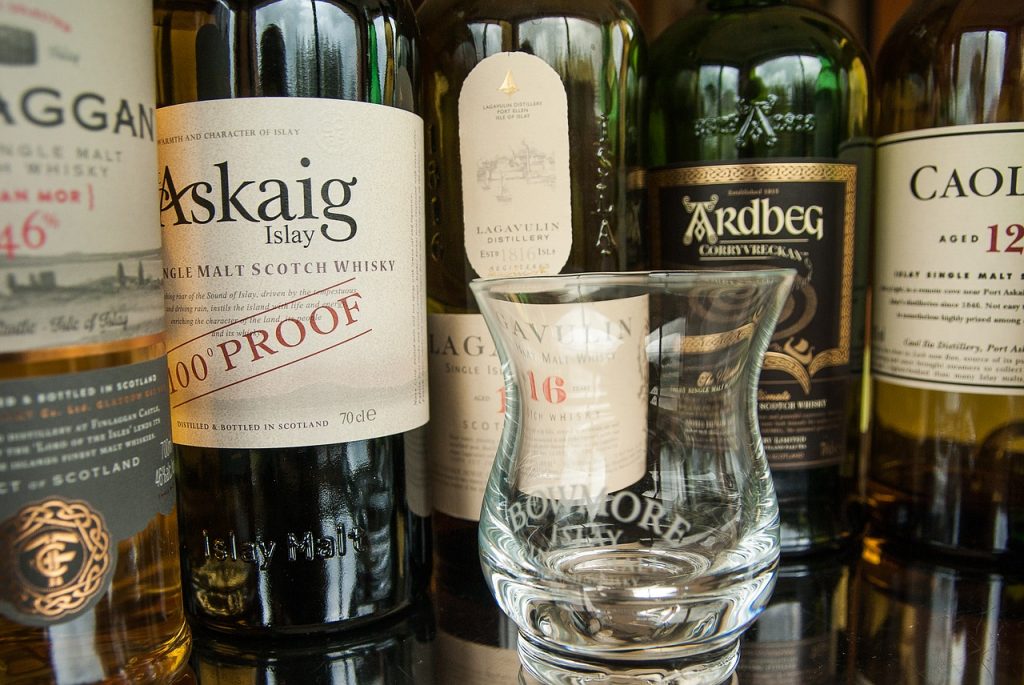
If you have opened bottles of whiskey that you intend to drink within the next six months, then, as long as the whiskey is kept in a well-closed bottle away from light and heat sources, it should remain absolutely fine for drinking, with very little change in quality.
Even if you come back to an opened bottle of whiskey after a couple of years, if it has been stored correctly, it will still be perfectly drinkable and safe; it just may not taste quite as strong and flavourful as it once did. The only ways in which whiskey can go ‘bad’ are if the whiskey’s contact with the air has caused the flavours to become undrinkable or if a contaminant has entered the bottle while it has been open that has altered the flavour or introduced bacteria to the bottle.
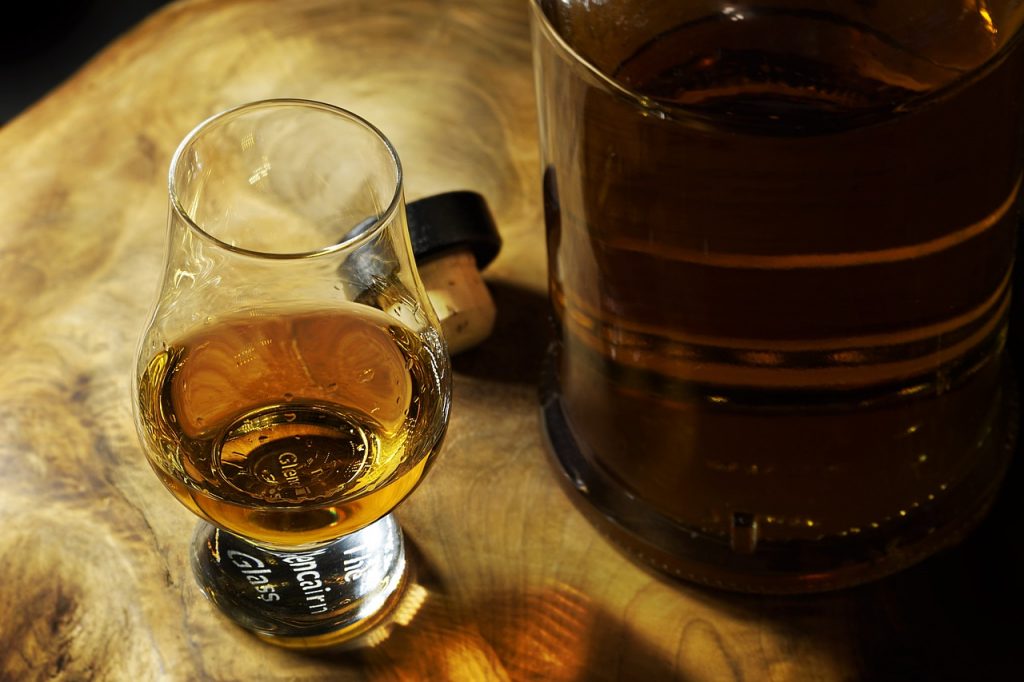
Whiskey should be stored upright in a dark location away from any sunlight. As whiskey corks are designed for multiple uses, unlike the single-use wine corks, they tend to be a little looser, so whiskey bottles should always be stored upright, as they may leak if kept on their side.
If you are looking to store whiskey long-term for collection purposes, then you will likely want to take other factors into consideration to ensure the continued safety of your drink. Whiskey does evaporate, so keeping your bottle in a cooler location away from any heat sources is a great way of reducing the amount of drink you are losing. Likewise, storing bottles in an area with too much humidity can also prove harmful for whiskey collections, as the damp environment of a cellar, for example, may cause the paper labels to go mouldy, which will damage your chances of a higher resale value.
If you are looking to add some more bottles of whiskey to your collection, then we have a wide selection of drinks from around the world, including Irish whiskey and Japanese whisky for sale in the UK!
No matter how you decide to serve your whiskey, whiskey stones can be a useful tool for sustaining a great drinking temperature for your dram. In the whiskey world, however, they are a controversial accessory for whiskey drinkers, with a fairly decisive split between those who love them and those who hate the stones! In this article, we take a look at what they are, how they are used and if they are beneficial for your whiskey.
Whiskey stones are cubes made from solid soapstone that can be placed in a glass of whiskey to help keep it chilled. To be used for chilling whiskey, the stones should be placed in the freezer for a few hours beforehand. Placing a couple of stones in the glass should then keep the whiskey chilled to a consistent temperature for hours!

How people serve whiskey is often down to personal preferences. Some enjoy it best with a splash of water, while others will argue that diluting your dram is spoiling the taste of your luxurious whiskey. Many whiskey lovers like their drink served on the rocks, with a cool piece of ice chilling the whiskey to create a more refreshing sip. However, as the ice melts, the whiskey will become increasingly diluted, altering the flavours of each sip. To avoid this, some people use whiskey stones to help keep their whiskey chilled without changing the impact of the whiskey. Unlike ice, whiskey stones are tasteless, odourless and won’t melt, so they should be able to keep the whiskey cool without impacting on its taste at all.
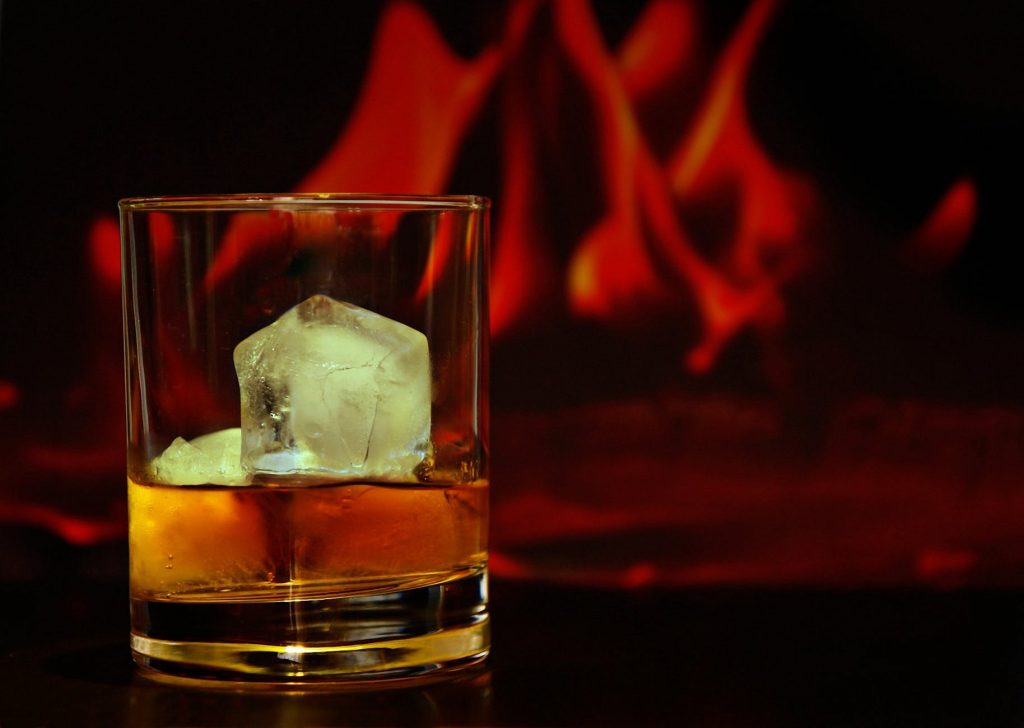
Again, this is largely down to personal preferences, but there are a number of arguments for and against whiskey stones when comparing it to ice. While whiskey stones don’t melt, which is seen as a plus by many, melting ice does help to cool down a drink far quicker than a whiskey stone will. Watering down some whiskies can also be a good thing, as reducing the burn of higher-proof alcohols can allow you to taste some of the subtleties in the whiskey’s flavour.
Some also argue that whiskey stones are fairly useless for true lovers of whiskey. These people are likely to enjoy their whiskey neat, with a splash of water, on the rocks or mixed into another beverage and therefore, there are few situations in which such an accessory would be needed. This is due to the fact that many people who drink their dram neat do so as they enjoy the heat of the alcohol, while those who want a cooler sip prefer their whiskey watered down a little. There will, therefore, be fewer people looking to drink their whiskey at a cooler temperature but a higher alcohol intensity.
How do you like your whiskey served? Let us know your thoughts on whiskey stones by leaving a comment below or get in touch via our social media channels! Regardless of how you drink your dram, ensure your drinks cabinet is fully stocked with incredible liquors by checking out our impressive range of whiskey, including Scotch whisky and Japanese whisky in the UK!
Image Credit: Your Best Digs
Game of Thrones fans have been counting down the days in anticipation for the eighth and final season of the hit television show. To increase the hype for this show even further, collectors and fans of whisky can also look forward to the release of the much-awaited Game of Thrones whisky collection.
Game of Thrones fans have been counting down the days in anticipation for the eighth and final season of the hit television show. To increase the hype for this show even further, collectors and fans of whisky can also look forward to the release of the much-awaited Game of Thrones whisky collection.
A commonly asked question relating to whiskey is whether or not Bourbon and whisky are the same thing. At its simplest, the answer is that Bourbon is a type of whiskey, but not all whiskies are Bourbons. To count as a Bourbon, the whiskey must meet a strict set of rules regarding its ingredients and distilling methods. We take a look at what makes a Bourbon and what makes a whiskey, and the differences between the two!
A commonly asked question relating to whiskey is whether or not Bourbon and whisky are the same thing. At its simplest, the answer is that Bourbon is a type of whiskey, but not all whiskies are Bourbons. To count as a Bourbon, the whiskey must meet a strict set of rules regarding its ingredients and distilling methods. We take a look at what makes a Bourbon and what makes a whiskey, and the differences between the two!
We will all be aware of the risks that come from overindulging in a few too many glasses of whisky too often, but are you aware of the potential benefits that the drink can bring when enjoyed in moderation?! While there is still a lot of debate as to whether the health benefits of alcohol, in general, outweigh the risks associated with drinking, research suggests that whisky actually has a number of great benefits. We take a look at some of the ways drinking whisky in moderation can improve our health.
In films we often see whiskey-drinking characters pouring a dram from an expensive looking crystal decanter, rather than straight from the bottle.
While this may look pretty cool, there is some debate amongst whiskey lovers as to whether or not pouring your whiskey into a decanter is necessary.
We take a look at whether or not you should be using a decanter for your whiskey.
(more…)